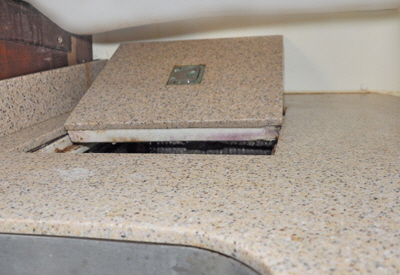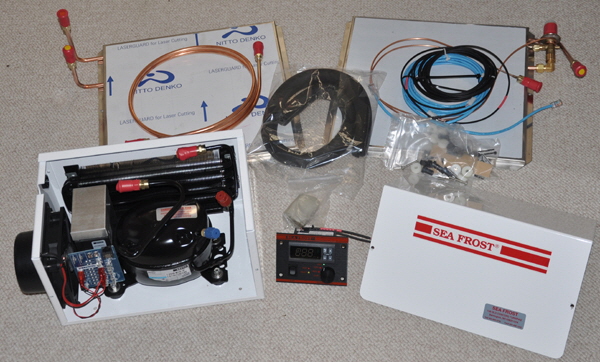
 A small fan circulates air through the condenser radiator inside the cabinet and blows it into a cupboard under the sinks that has a louvered door.
A small fan circulates air through the condenser radiator inside the cabinet and blows it into a cupboard under the sinks that has a louvered door.
A ball valve on the water drain-pipe in the bottom of the box to prevent even the slightest amount of cold escaping down the pipe.
.

Britannia has a 3.5 cu ft deep freeze in the galley that will freeze and keep food frozen indefinitely at -10 degrees F. It is powered by a 12 volt compressor by Sea Frost the major supplier of high quality freezers for sailboats. The cabinet in insulated with 6” inches of R6 insulation which keeps the compartment frozen for 12 hours even when the compressor is not working.